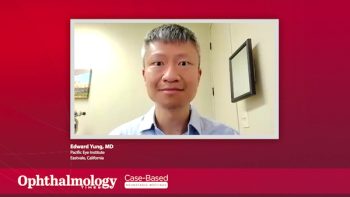
A panelist discusses how selecting the right MIGS procedure based on individual patient factors—such as glaucoma severity, angle anatomy, and target IOP—can optimize outcomes and personalize glaucoma management.

A panelist discusses how selecting the right MIGS procedure based on individual patient factors—such as glaucoma severity, angle anatomy, and target IOP—can optimize outcomes and personalize glaucoma management.

A panelist discusses how combining cataract surgery with canaloplasty and trabeculotomy using the Via360 device offered an effective MIGS solution for a patient with open-angle glaucoma and poor medication adherence, reducing IOP while minimizing the need for filtering surgery.

A panelist discusses how differences in viscodilation devices—particularly the presence or absence of pressurized viscoelastic delivery—impact IOP outcomes in MIGS, highlighting the advantages and trade-offs of Omni, iTrack Advance, and Via360 based on surgical goals and ease of use.

A panelist discusses how Via360 viscodilation effectively reduced IOP and improved vision in a 90-year-old woman with chronic angle-closure glaucoma, offering a suitable surgical solution given her complex medication regimen and poor adherence.

A panelist discusses how nonimplant MIGS, such as viscocanaloplasty and viscoelastic delivery devices, offer long-term IOP reduction and medication savings, emphasizing their benefits for early intervention and improved postoperative quality of life, while noting limitations for more advanced glaucoma conditions.